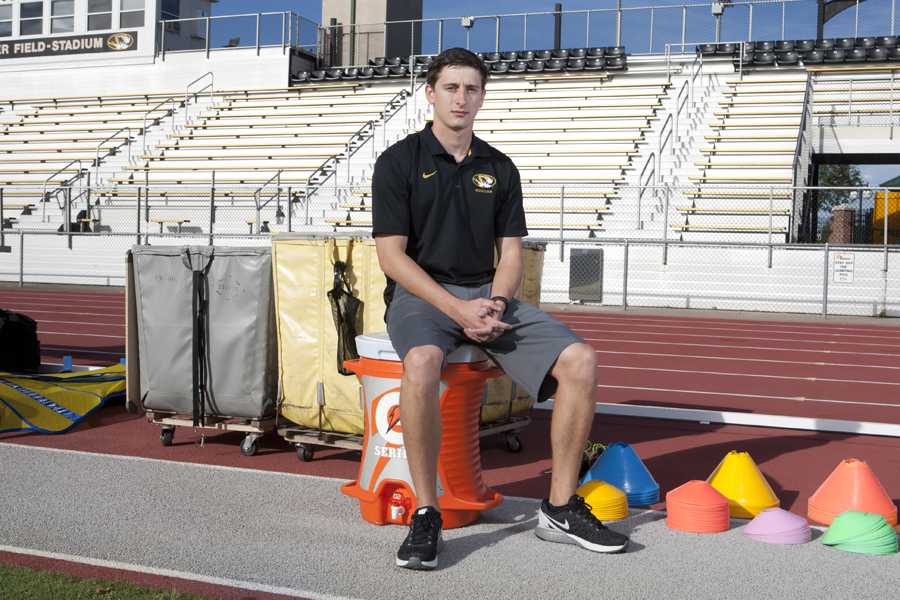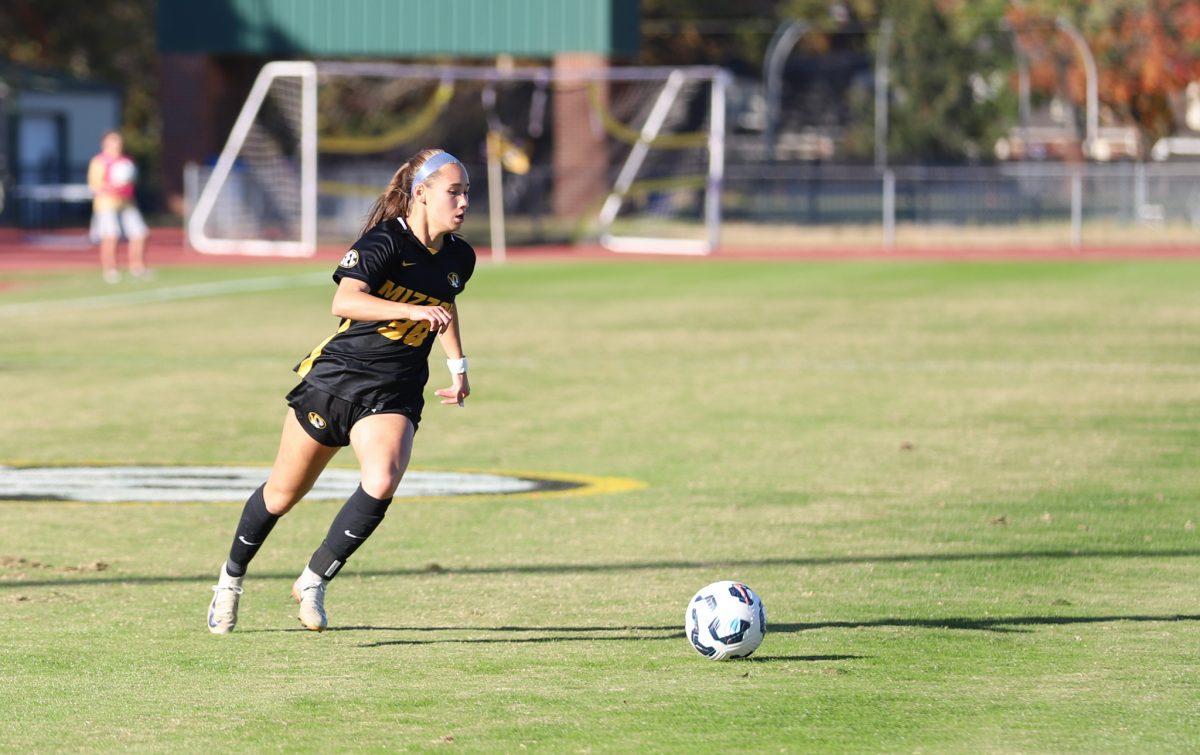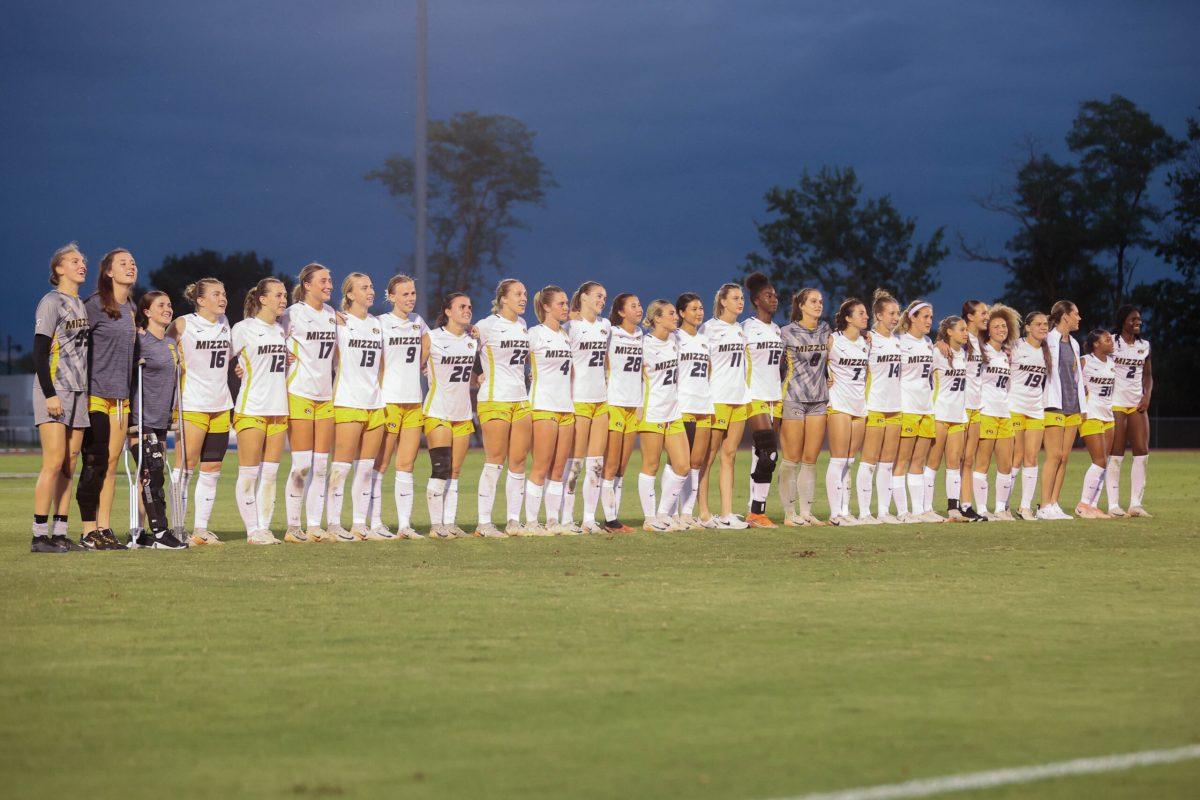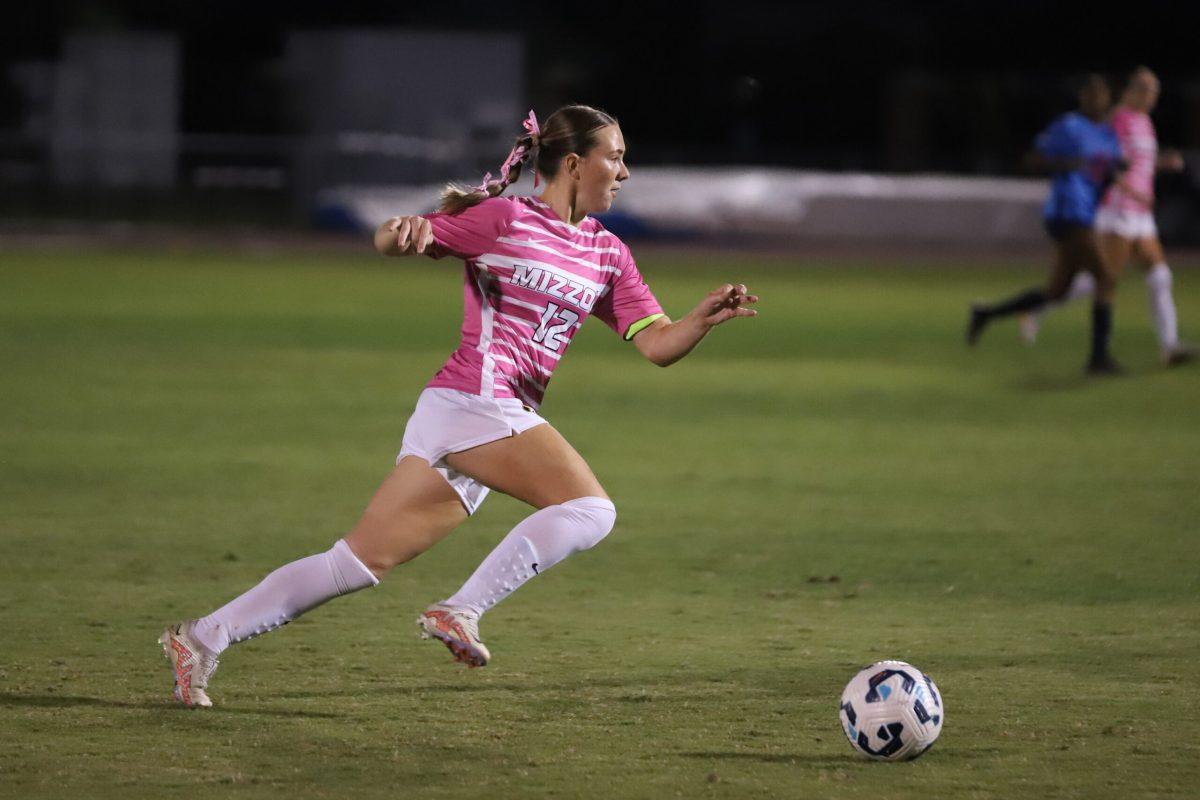Bryan Blitz mans the head coach position for Missouri’s women’s soccer program. He’s assisted by Brian Dooley and Katie Ely. The trio manages play on the pitch each game, subbing players in and out, and yelling out commands to the squad.
But another member of the coaching team is stationed up in the press box, typing away on his MacBook Pro with a desktop cluttered full of video highlights and making the occasional humorous comment in an English accent about a shot that sails 30 feet over the crossbar. Sam Lawson is the director of performance analysis for the Tigers.
Lawson, a graduate student in sports psychology, works on the sabermetrics side of soccer. For him, games consist of working with Prozone, a performance analysis program founded in the United Kingdom, where Lawson is from.
Prozone has pioneered performance analysis in rugby and soccer for 19 years, partnering with every English Premier League and Champions League team. US Soccer has a partnership with Prozone, too. Lawson said 11 Southeastern Conference programs use the software.
In his second season at the helm, Lawson’s job is to provide game video to Prozone and then produce a typed-up recap from the data. Following every Missouri game, Lawson sends the full game video to Prozone headquarters. Within 24-36 hours, Lawson has a stat of every time every player has touched the ball. Complete passing maps are just two clicks away.
“We’re trying to find that viable 10 percent that can make the difference on the field — make the difference psychologically before the players even walk out,” said Lawson, who did his undergraduate studies at University Campus Suffolk in England, earning a degree in sports and exercise science in 2012. “It helps the players improve. It gets them ready for the next stage. It gets them and the coaches to look at the game in a completely new way.”
Lawson’s previous performance analysis job did not have the same amenities.
For eight months Lawson worked as the performance analyst for the Napier City Rovers and Hawkes Bay United in the Central Region Premier League of New Zealand while also playing for both teams. Lawson was without the Prozone software, and he had to create passing maps and charts himself on Microsoft Word. Lawson said back then it took three days to do half of what Prozone could do in 24 hours.
When Lawson was offered the job at Missouri, he couldn’t resist. Lawson moved to the United States at 22-years-old and immediately went right to work for the Tigers.
After his first game with Mizzou, Lawson managed to pull a three or four page report from the data he collected. The coaches were surprised by the things he saw, and the things they could get from the software he used.
“It helps a lot,” Blitz said. “Sometimes players and coaches see things that might be an opinion. (Lawson’s work) takes the emotions and opinions out. We can see where we are playing our best and things that we value such as tackles and time of possession.”
Lawson said he agreed that when he watches the game film, he sees things the average fan, or even coach, misses. At halftime Lawson talks to the Missouri coaches, sharing with them what he sees from the team and the opposition.
“The players have been fantastic with trying to receive the information from me,” Lawson said. “The reception I’ve had here has been great and everyone is on board with what I do.”
Following weekend games, by Monday Blitz has over 90 different stats on each player. Blitz said with the abundance of stat categories Lawson provides for each player, it makes it easier to set a depth chart.
“A player might say, ‘How come Lucy is playing ahead of me?’ Well, this is what they are doing, and this is what you should be doing,” Blitz said. “This is their percentage range (of passing) you should be in if you want to be a starter, if you want to play a lot of minutes, if you want to come off the bench.”
Senior midfielder Kaysie Clark said she enjoys hearing the stats at halftime that are passed along from Lawson to Blitz. She said the analytics benefit the team as a whole, as well as each player individually.
“It helps us all to see where we’re at, where we need to be,” Clark said. “Personally, when I see my stats on dribbling or my passing percentage, I can then transfer it to the field — do what the stats show. And then on the opposite end, I can look at the stats and go ‘I need to do better here.’”
Lawson said the hardest part is the turnaround. With the frequent two-game weekend homestands as well as scouting the opposing teams, Lawson sometimes gets backed up with work.
“The amount of stats that I have to look at and the amount of matches I have to do for each weekend has doubled,” Lawson said. “It’s hard to find time outside, but it’s what I love to do, so it’s easy for me to make that sacrifice.”
Lawson said that in his future he sees himself doing exactly what he is doing now, maybe even for a professional soccer program.
“I found the job that I want to do,” Lawson said. “I found the sport that I love doing it for. I just have to keep moving forward, keep progressing in what I do now. My main thing is making a difference to a team no matter where it is or what level.”













